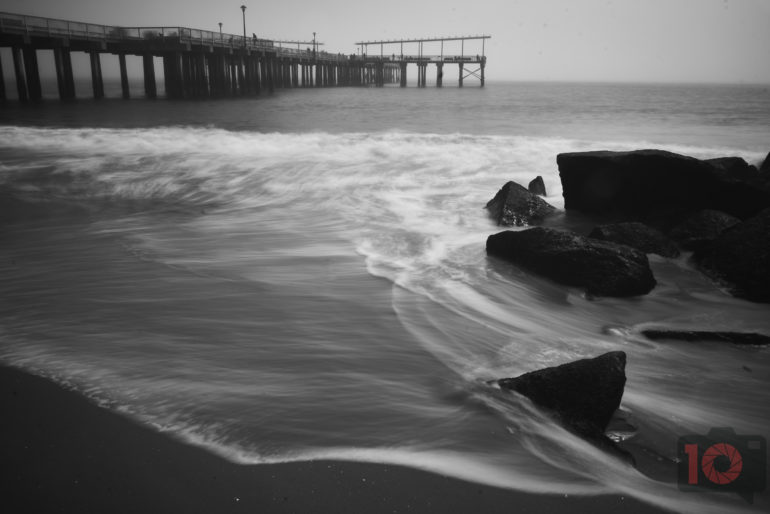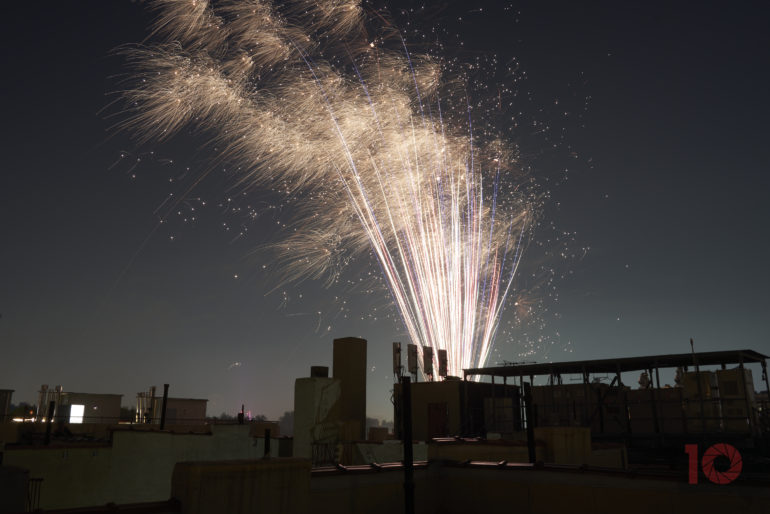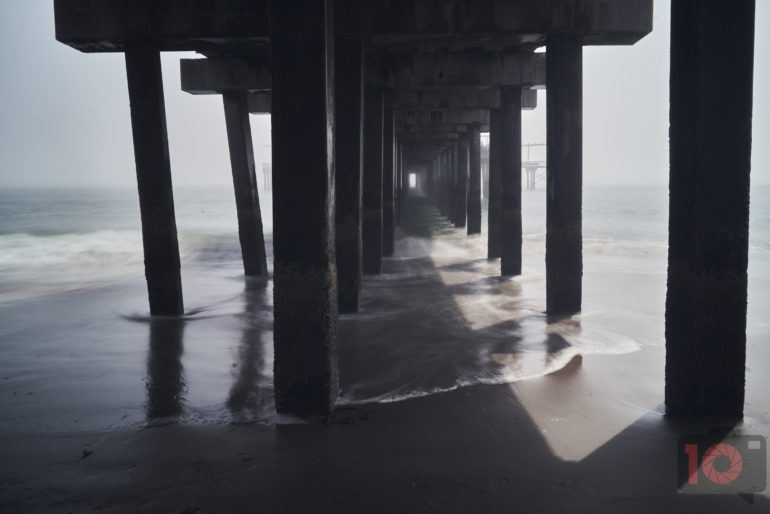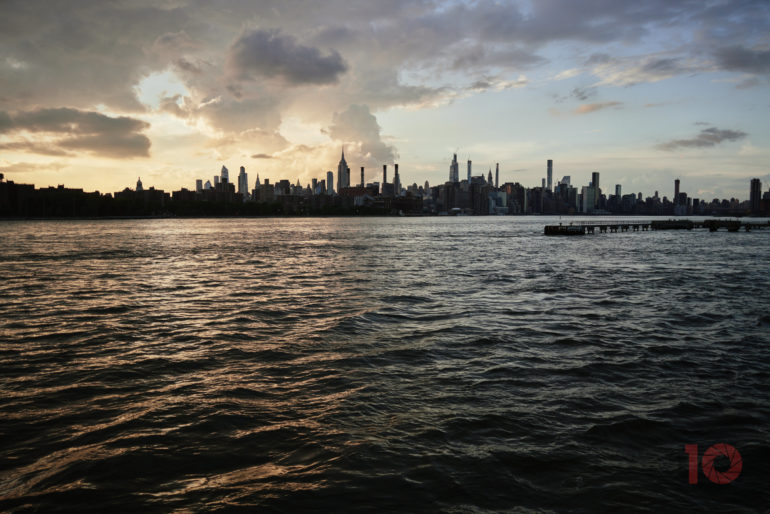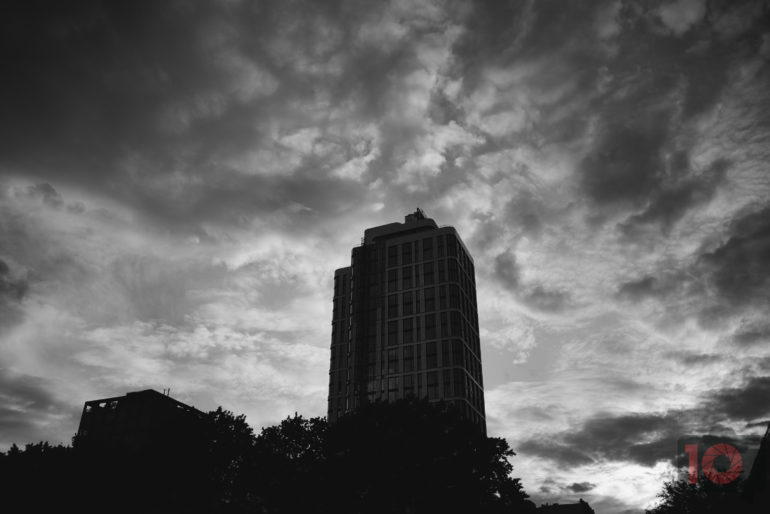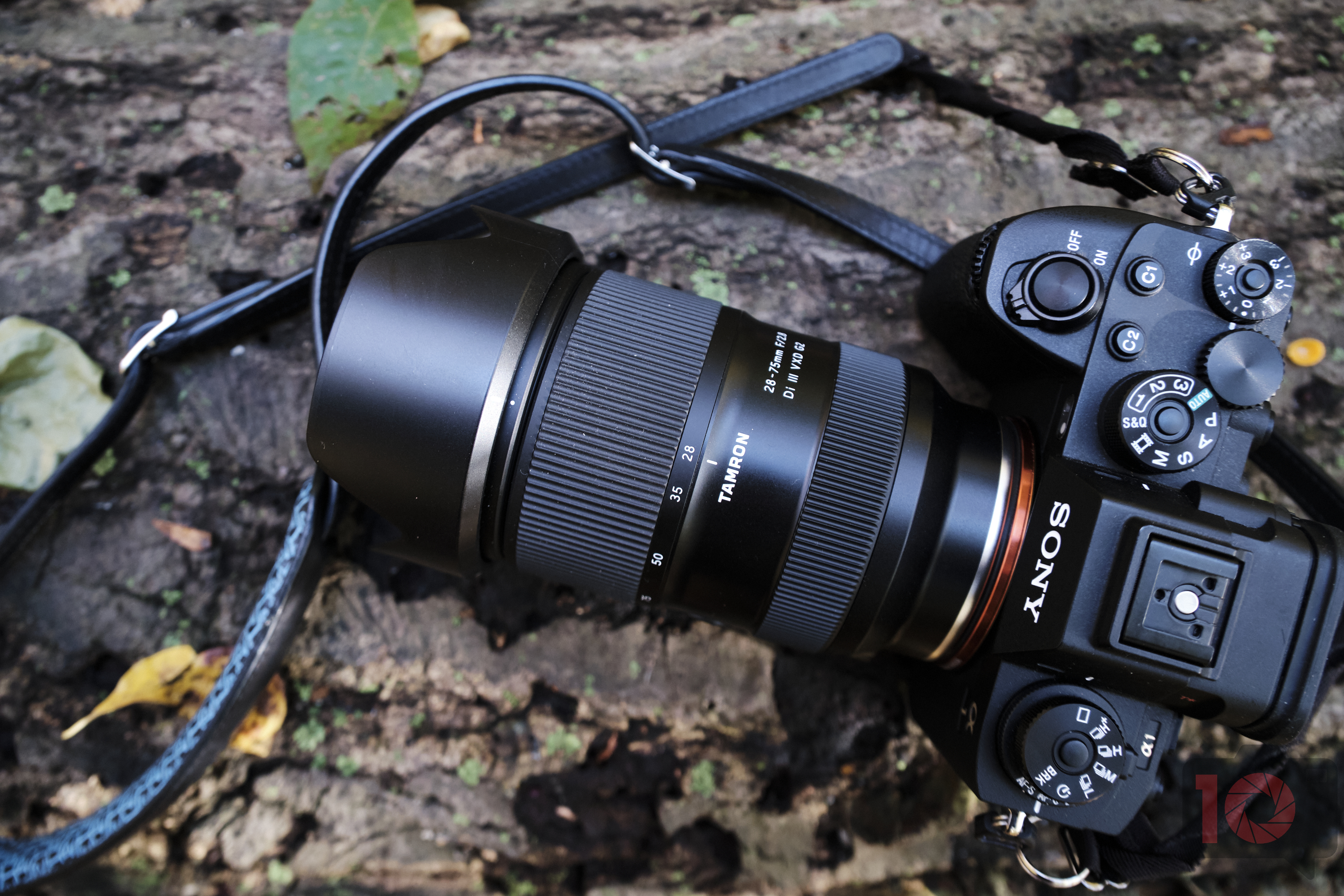If you’ve picked up a real camera, then chances are that it’s because you want a zoom lens. Every photographer should have at least one in their kit. Yes, it took me years to say that. But these days, affordable zoom lenses are so good that it’s almost nonsensical not to have one — even if you really prefer prime lenses. So here’s what we think is the best zoom lens under $2,000 and a bunch of other really great ones!
The Phoblographer may receive affiliate commission payments for links clicked in this article upon making a purchase. This article is presented in partnership with Tamron.
Table of Contents
How We Selected the Best Zoom Lenses Under $2000

Here’s some insight into how to use this guide to the best Zoom lens under $2,000:
- The Phoblographer’s various product round-up features are done in-house. Our philosophy is simple: you wouldn’t get a Wagyu beef steak review from a lifelong vegetarian. And you wouldn’t get photography advice from someone who doesn’t touch the product. We only recommend gear we’ve fully reviewed in these roundups.
- If you’re wondering why your favorite product didn’t make the cut, there’s a chance it’s on another list. If we haven’t reviewed it, we won’t recommend it. This method keeps our lists packed with industry-leading knowledge. Some of our stories include affiliate links. If you buy something through one of these links, we may earn an affiliate commission.
- This guide is sponsored by Tamron. However, just because it’s sponsored doesn’t at all question our authenticity. Tamron’s autofocus is often much better than competitors at similar price points. They also add full weather resistance to their products. On top of that, their image quality is really unique with a signature look that many photographers can get behind.
- So what makes a lens get onto our list of the best zoom lenses under $2,000? This guide is gauging a few things. First off, there’s affordability — obviously. For the money, our selections can do a whole lot. Then there’s the image quality: which a lot of folks care about. On top of that, there’s the reliability. We look at this in two different ways: first off, autofocus. Is the autofocus always able to nail the subject? What about in low light? Then we have to consider build quality. Products that have full weather resistance built in are better for long term durability and functionality. Trust us, if you dive into our hyperlinked reviews, you’ll see what we do to these lenses. For most, it’s not pretty.
- The products in this list of the the best zoom lenses under $2,000 were all tested by us. We also shot all the images ourselves.
Here’s another trick: the black levels. No, you don’t need to spend time editing in post-production to get deeper black levels. Instead, you can use contrast in your lighting to deepen the darker areas. Higher contrast tricks the eye into not paying attention to the black areas. Because that’s happening, folks will think your photos are sharper. It’s a pretty brilliant hack, if not disingenuous. However, the only people that will truly care are photographers. And in the end, who cares what some photographer thinks about your work on the internet.
THE SECRET TO SHARPER PHOTOS THAT YOU FORGOT ABOUT
TAMRON NOMENCLATURE
Here are some common Tamron terms in their lens naming and what they mean.
- Di: Tamron Di (Digitally Integrated) lenses are performance-optimized for digital cameras. Lenses with the nomenclature Di are lenses for DSLRs featuring full-frame sensors; Di II for DSLRs with APS-C sensors; Di III for mirrorless cameras with full-frame sensors; and Di III-A for mirrorless cameras with APS-C sensors.
- VXD: (Voice-Coil eXtreme torque Drive) The VXD AF Drive provides the highest levels of autofocus speed and precision in Tamron’s long history. It is Tamron’s first-ever linear motor focus mechanism for stunningly fast and accurate auto-focusing. Two VXD units are arranged in a floating system and operated simultaneously via electronic control to achieve excellent optical performance at all shooting distances near and far. Focus tracking is vastly improved for sports and racing photography.
- G1 or G2: First or second generation of a particular Tamron lens.
- VC: (Vibration Compensation Image Stabilization System) Tamron’s VC uses a proprietary actuator and algorithms to deliver an extremely stable viewfinder image with excellent tracking. The 3-coil system electromagnetically drives the lens element that compensates for vibration, which glides smoothly on three balls with little friction. Several lenses offer different modes for panning and video shooting. VC can also be customized with the TAP-In Console or Tamron Lens Utility. VC should always be turned off when using the lens on a tripod.
- RXD: (Rapid eXtra-silent Drive) The RXD stepping drive uses an actuator to precisely control the rotational angle of the motor, allowing it to directly drive the focusing lens without passing through a reduction gear. A sensor that accurately detects the position of the lens enables high-speed and precise AF, which is ideal when shooting moving subjects or video.
the OVerall Best Zoom Lens Under $2000: TAMRON 28-75MM F2.8 DI III VXD G2

Tech Specs
These specs are taken from the LensRentals listing
| Angle of View | Diagonal 75° 23’- 32° 11’ (for full-frame mirrorless format)° |
| Aperture Blades | 9, Rounded |
| Aspherical Elements | 3 |
| Autofocus | Autofocus |
| Brand | Tamron |
| Compatibility | Full Frame |
| Filter Size | 67.0mm |
| Focal Length | 28.0-75.0 |
| Groups/Elements | 15/17 |
| Hood Included | Yes |
| Image Stabilization | No |
| Item Type | Lens |
| Length | 4.6″ |
| Lens Type | Normal Range |
| Low Dispersion Elements | 4 |
| Max Aperture | 2.8 |
| Maximum Magnification | 1 to 2.7x |
| Mfr. Model Number | A063 |
| Minimum Aperture | 22.0 |
| Minimum Focusing Distance | 0.6feet |
| Mount | Sony E |
Why We Like It
- Beautiful image quality
- Works with Sony’s autofocus algorithms
- Weather sealing
- Integrated USB port
- Lightweight
- Feels great in the hands
- Works very well on older Sony cameras if you’re on the appropriate autofocusing type
- Can do pretty well in continuous autofocus
- It’s only $879
What We Think
We’re choosing the Tamron 28-75mm f2.8 G2 for a slew of reasons. The first is that we know there are a ton of Sony shooters out there that love this lens. It gives you a bit more reach on the longer end, which is what a lot of photographers need for portraits. But in addition to that, you get a very versatile range. Consider that it’s fully weather-resistant too and also works perfectly with Sony’s autofocus algorithms thanks in part to Sony’s partial ownership of Tamron. I mean, why wouldn’t you go for this lens?
Here are the conclusions to our review of lens as well as a sample image gallery.
The Tamron 28-75mm f2.8 G2 is a great lens. It builds on the previous version with a built-in USB port, faster autofocus, and a new finish. Personally, I was a tad shocked to see it refreshed this early. But there isn’t a single thing bad or wrong with this lens. It boasts great image quality that you’ll really like. It innovates with the new USB port. And it retains the lightweight design with a weather-sealed body. There isn’t a single thing to complain about really.
Quite frankly, this lens would’ve won our Editor’s Choice award considering its $879 price tag. But it’s being overshadowed by the much more attractive Tamron 35-150mm f2-f2.8. Sure, that lens is a bit more than double the price, but it’s also arguably the only lens you’d ever need.
To be more forthright, this lens is part of what’s genuinely making me consider selling all my Sony lenses and going all in on Tamron glass.

The Tamron 28-75mm f2.8 G2 receives five out of five stars. Want one? Check out Amazon!
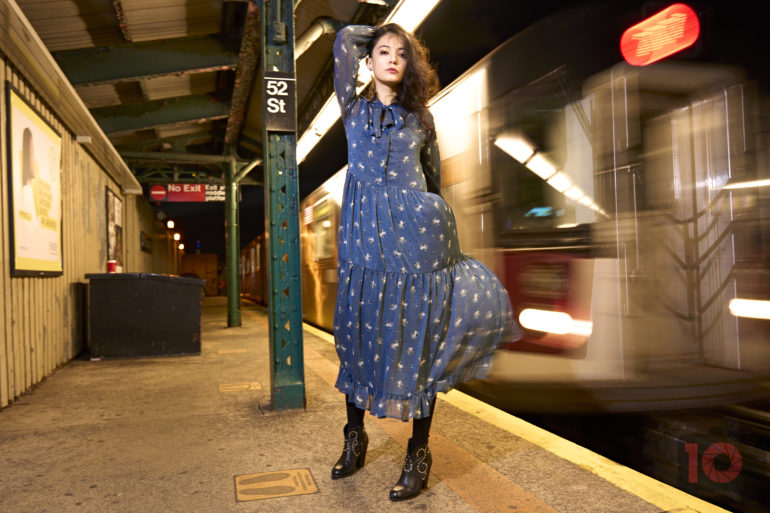

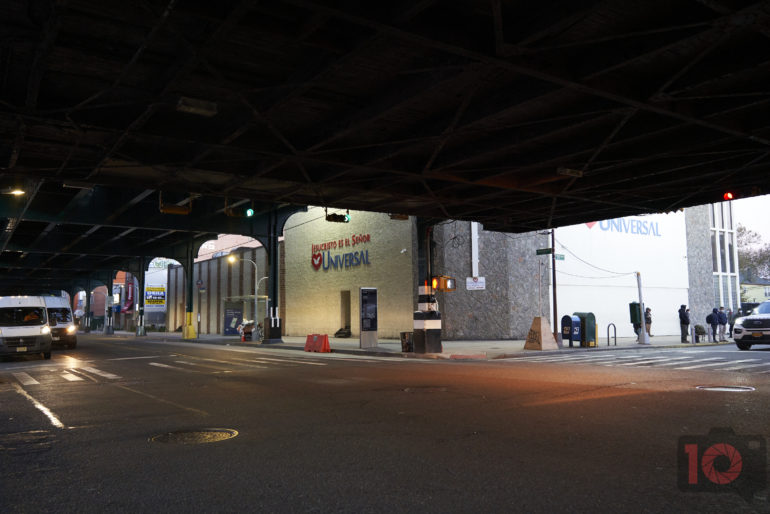

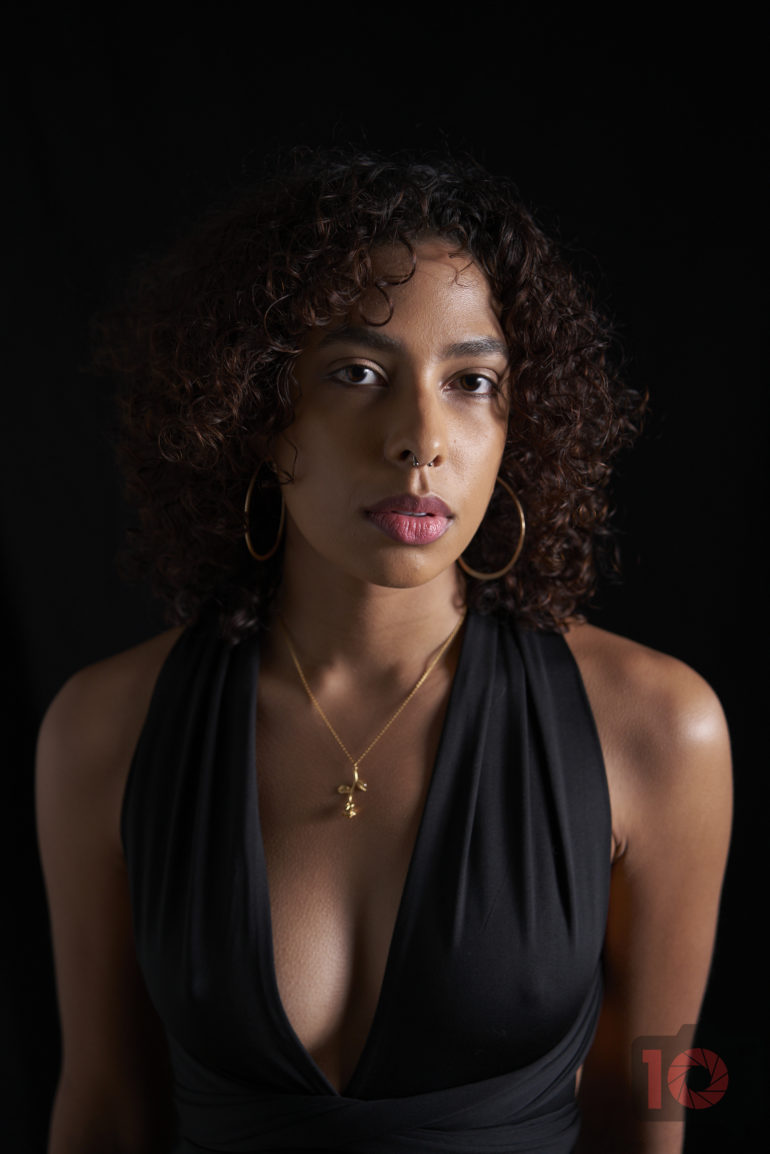

3 Other Great Zoom Lenses Under $2000
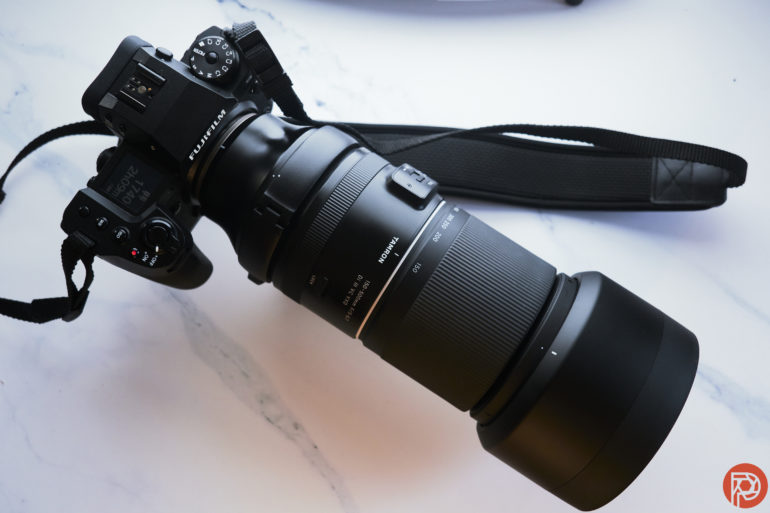
Here are a bunch of other great options that photographers will enjoy. The rest of this list addresses the needs of various photographers and various niches. All of these lenses have given us great images, and there are sample image galleries from each lens.
Best Zoom Lens for Birding: TAMRON 150-500MM F5-6.7 DI III VC VXD (For Sony and Fujifilm)
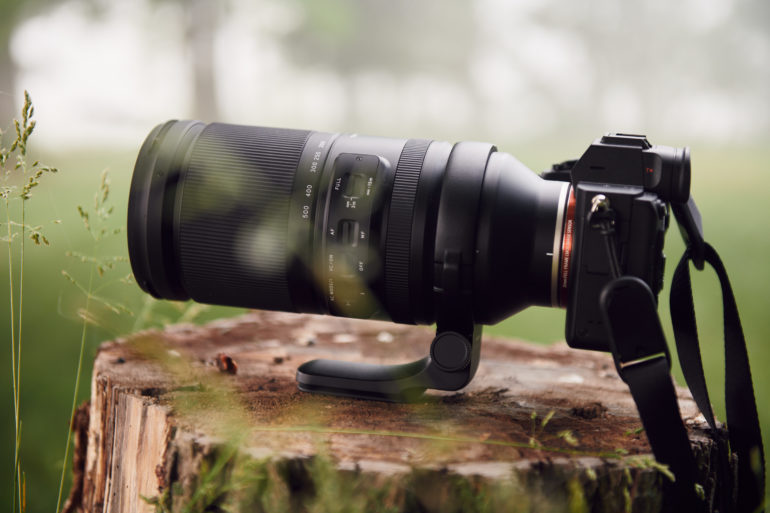
Tech Specs
- Focal Length: 150-500mm
- Maximum Aperture: F5-6.7
- Angle of View: (diagonal) 16°25’-4°57′ (for full-frame mirrorless format)
- Optical Construction: 25 elements in 16 groups
- Minimum Object Distance: 0.6m (23.6 in) (WIDE) / 1.8m (70.9 in) (TELE)
- Maximum Magnification Ratio: 1:3.1 (WIDE) / 1:3.7 (TELE)
- Filter Size: φ82mm
- Maximum Diameter: φ93mm
- Length: 209.6mm / 8.3 in (front tip of the lens to the lens mount face)
- Weight: 1,725g (60.8 oz) (without tripod mount included) / tripod mount 155g (5.5 oz)
- Aperture Blades: 7 (circular diaphragm, the circular diaphragm stays almost perfectly circular up to two stops down from maximum aperture)
- Minimum Aperture: F22-32
- Standard Accessory: Round-shaped hood, Lens caps, Tripod mount
- Compatible Mounts: Sony E-mount
In our review, we state:
In late 2022, Tamron announced that the Tamron 150-500mm f5-6.7 Di III VC VXD will be available for Fujifilm X mount. In many ways, this is perfect. It’s a full-frame lens now being used on an APS-C sensor. And overall, the autofocus works pretty well.


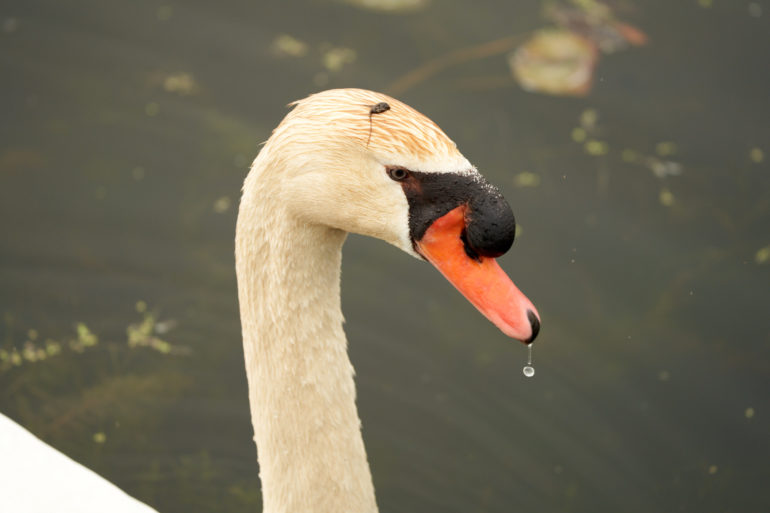


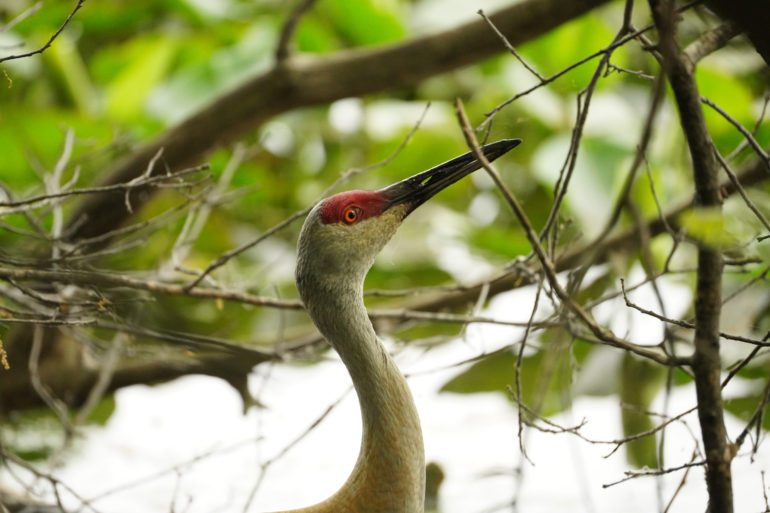
Best Zoom Lens for APS-C Camera Professionals: Tamron 17-70mm F2.8 Di III-A VC RXD (For Sony and Fujifilm)
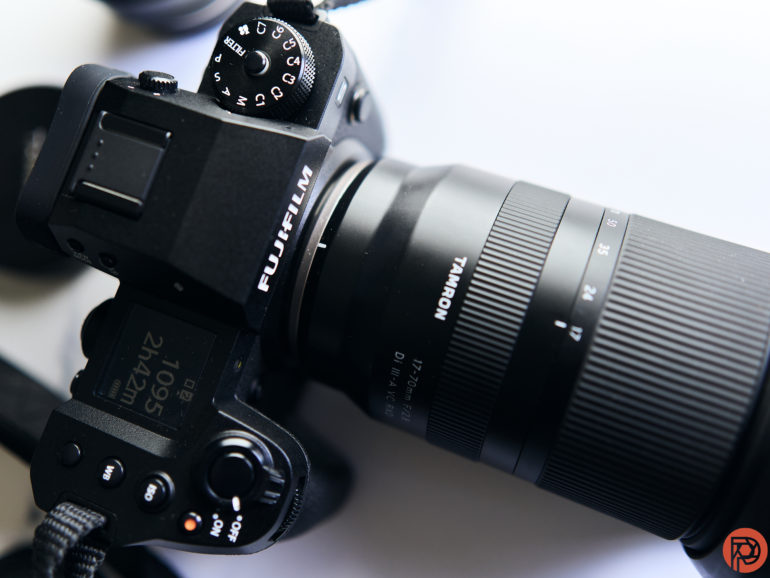
Tech Specs
- Lens construction: 16 elements in 12 groups
- Angle of view (APS-C): 79゜55′-23゜00′
- Number of diaphragm blades: 9(Rounded diaphragm)
- Minimum aperture: F22
- Minimum focusing distance: 0.19m (7.5 in) (WIDE) / 0.39m (15.4 in) (TELE)
- Maximum magnification ratio: 1:4.8 (WIDE) / 1:5.2 (TELE)
- Filter size: φ67mm
- Diameter: 74.6mm
- Length: 119.3mm (4.7 in)
- Weight: 525g (18.5oz)
- Accessories: Flower-shaped hood, Lens caps included
The Tamron 17-70mm F2.8 Di III-A VC RXD is the full-frame equivalent of a 26-105mm f2.8 lens. The depth of field will be around f4.2 in full-frame too. But the light gathering and true aperture will still be f2.8. This is the first time we’ve ever gotten a lens like this. Add onto all this the vibration compensation, sharp optics, and weather sealing features. Then realize that it’s under $1,000. To me, this sounds like a no-brainer.
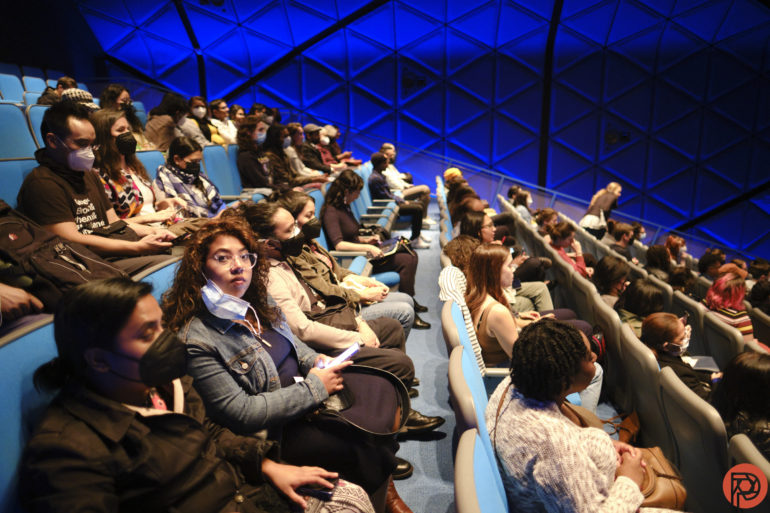

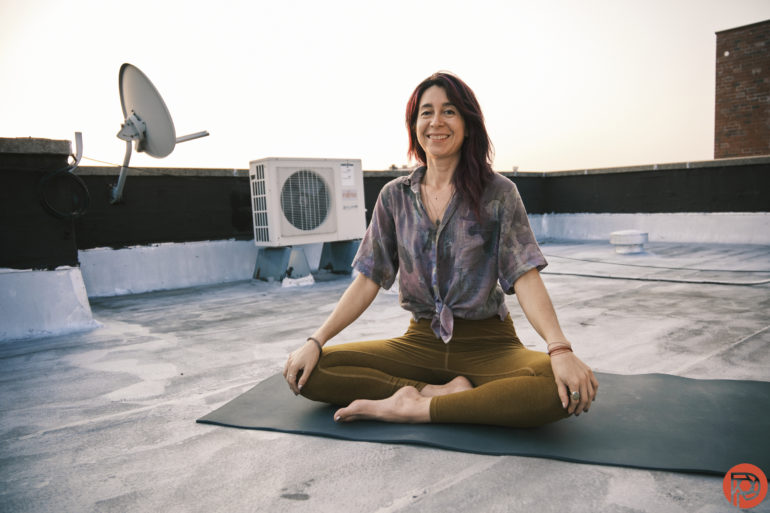





Best WAlkaround Zoom Lens for Full-Frame Shooters: TAMRON 28-200MM F2.8-5.6 DI III RXD (Sony)
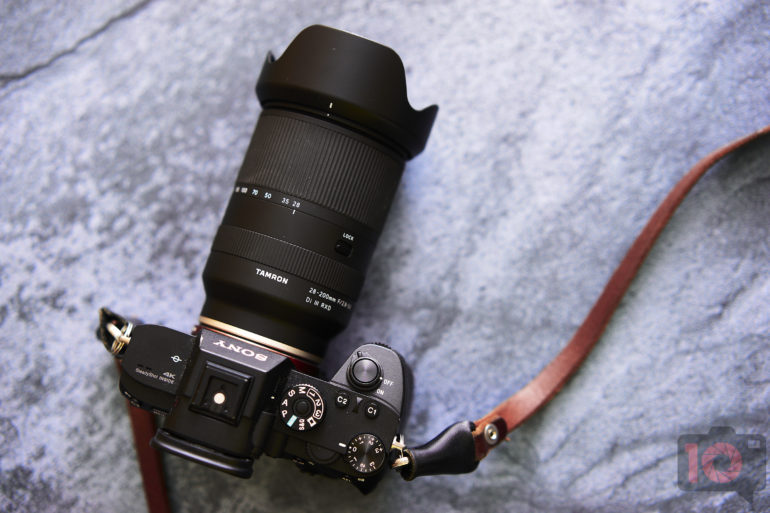
Tech Specs
| Angle of View | 75° 23′ to 12° 21′ |
| Aperture Blades | 7, Rounded |
| Autofocus | Autofocus |
| Brand | Tamron |
| Compatibility | Full Frame |
| Diameter | 2.9″ |
| Filter Size | 67.0mm |
| Focal Length | 28.0-200.0 |
| Groups/Elements | 14/18 |
| Hood Included | Yes |
| Image Stabilization | No |
| Item Type | Lens |
| Length | 4.6″ |
| Lens Type | Normal Range |
| Max Aperture | 2.8 |
| Maximum Magnification | 0.32x |
| Mfr. Model Number | A071 |
| Minimum Aperture | 22.0 |
| Minimum Focusing Distance | 0.6feet |
| Mount | Sony E |
| Weight | 1.27 lbs. |
In our review, we state:
The best part about Tamron lenses is that since Tamron is partially owned by Sony, I have a strong feeling that they’re sharing autofocus information better. So with the Tamron 28-200mm f2.8-5.6 Di III RXD attached to the Sony a7r III and the Sony a7 original, it felt just like it was focusing with a Sony lens. It’s awesome.
